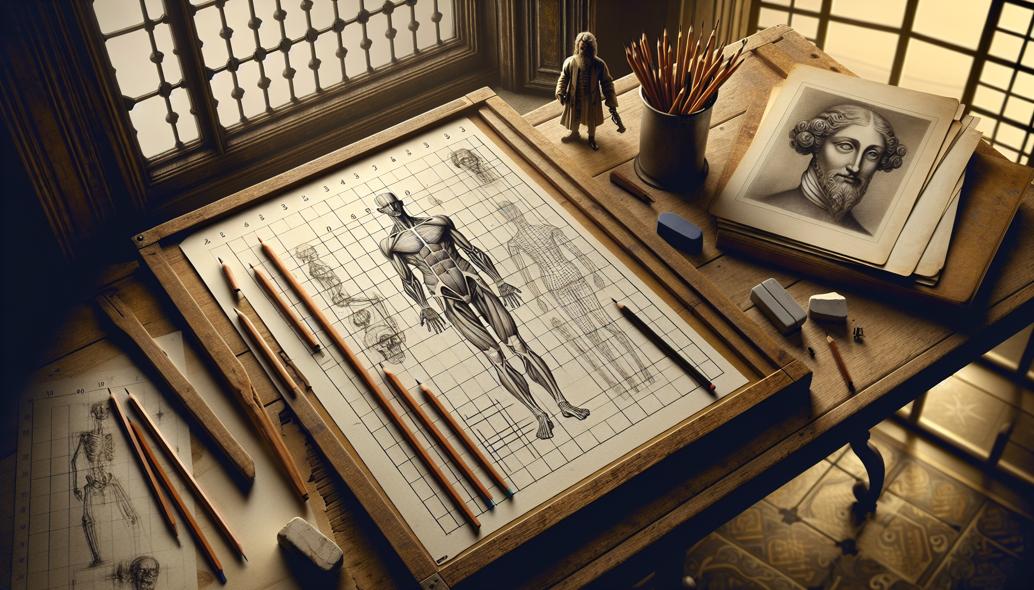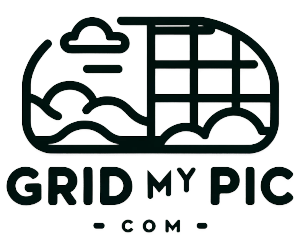Using Grids to Understand Anatomy in Figure Drawing
Unlock the secrets of realistic figure drawing with the grid method! Discover how breaking down complex anatomy into simple, manageable squares can revolutionize your artistic skills and precision. Dive in to master proportions and elevate your art!

Using Grids to Understand Anatomy in Figure Drawing
In the world of art, mastering the human form stands as one of the most rewarding endeavors. For artists, both amateurs and professionals, a comprehensive understanding of human anatomy is critical for creating realistic and expressive figures. One age-old method that remains highly effective is the use of grids. The Grid Method in Anatomy Drawing simplifies the intricacies of human anatomy, enabling artists to accurately capture Proportions and refine their Art Skills. In this blog post, we'll dive deeply into how you can use grids to enrich your Figure Drawing abilities.
Understanding the Grid Method
The Grid Method is a technique that involves drawing a grid over a reference image and then replicating that grid on your paper or canvas. By breaking down complex images into smaller, more manageable squares, you can easily identify and transfer specific details, ensuring accurate proportions and alignment.
When applied to Anatomy Drawing, the Grid Method can demystify the complexity of the human body. This method is especially useful for beginners who may struggle to capture the correct proportions and placement of anatomical features. Over time, as you improve, you'll find that you may no longer need to physically draw the grids, as your eye will naturally divide the human figure into these segments.
Choosing Your Tools
For this technique, you'll need some basic drawing tools:
- A reference image: Preferably one that is high-resolution and adequately lit to see anatomical details clearly.
- Graph paper or a ruler: To create your grid. Software tools like Photoshop also have grid-creating tools if you prefer working digitally.
- Pencils and erasers: Various grades of pencils for sketching and shading.
- Sketchpad or drawing paper: Where you'll transfer your grid and drawing.
Creating a Grid
Step 1: Preparing the Reference Image
Choose a high-quality reference image that shows the human figure in a clear and detailed manner. The image should show the body as close to a natural pose as possible to get accurate details.
Step 2: Drawing the Grid on the Reference Image
Next, overlay a grid onto your reference image. You can do this digitally via software or manually by drawing on a printed image. Divide the image into equal squares. Common grid sizes are 4x4, 8x8, or even 10x10, depending on the level of detail you wish to capture.
Step 3: Transferring the Grid to Your Drawing Surface
Replicate the grid on your sketchpad or drawing paper using a pencil and a ruler. Ensure that the squares on your paper are proportionately the same size as in the reference image. For precision, lightly draw the lines so they can be easily erased later.
Mapping the Anatomy with the Grid Method
Once your grid is in place, it's time to start drawing. Each square in the grid acts as a mini-canvas, allowing you to focus on the contained details without being overwhelmed by the entire figure. Here's how you can proceed:
Step 1: Identify Key Landmarks
Begin by identifying key anatomical features within each grid square. These landmarks can be joints, the contours of muscles, or the outlines of bone structures. Draw these initial points lightly.
Step 2: Draw Basic Shapes
Outline the major forms such as the head, ribcage, pelvis, and limbs using basic shapes like ovals, circles, and rectangles. Ensuring these forms are aligned correctly within their respective grid squares will help maintain correct proportions.

Step 3: Refine the Details
With the basic shapes in place, start adding details like the muscles, facial features, and intricate contours of the body. Pay close attention to how these features fit within their respective grid squares, adjusting as necessary for accuracy.
Importance of Proportions in Figure Drawing
Proportions are essential in Figure Drawing. They not only ensure that each part of the figure relates correctly to the others but also imbues the drawing with realism. The grid method offers a structured approach to maintaining consistent proportions.
Measuring proportions
You can use the head as a unit of measurement for the rest of the body. Common proportional guidelines include:
- The body is generally 7-8 heads tall.
- The pelvis can often fit between the third to the fourth head length.
- The length of the arms and legs can also be calculated using head lengths for more accuracy.
Benefits of Using the Grid Method
Enhanced Accuracy
By focusing on smaller sections of the figure, you can ensure higher accuracy and attention to detail. Mistakes are easier to catch and correct when working within confined spaces.
Better Understanding of Anatomy
The grid method compels you to observe and understand the ebbs and flows of anatomical structures. This heightened awareness contributes significantly to your ability to draw these features accurately from memory.
Incremental Learning
For beginners, the grid method breaks down the daunting task of figure drawing into manageable steps. Each square is a small learning module, helping build confidence as skills are developed.
Refinement and Practice
Using grids is not an endpoint but a stepping stone in mastering Figure Drawing. As your Art Skills sharpen, you might find the rigid structure of grids limiting. However, the foundational knowledge and improved Proportions gained from this method are invaluable.
Repetition
Repetition is key in drawing. Practicing various poses and figures using the grid method will solidify your understanding of anatomy.
Advanced Techniques
Once comfortable with basic anatomy, you can challenge yourself by drawing figures in more complex poses or perspectives, eventually moving on to freehand drawing without the aid of grids.
Final Thoughts
Understanding the human form is a journey that blends anatomical science with artistic intuition. The Grid Method serves as an effective bridge between these disciplines, offering a structured way to grasp complex anatomical elements while honing your artistic sensibilities. With practice, this method will not only refine your Figure Drawing skills but also deepen your appreciation of the beauty and complexity of human anatomy.
By methodically breaking down the figure into manageable segments, the grid method empowers artists of all levels to improve their Learning experience, maintain accurate Proportions, and ultimately advance in their artistic journey. Get your grids ready, and dive into the compelling world of anatomy in figure drawing!
